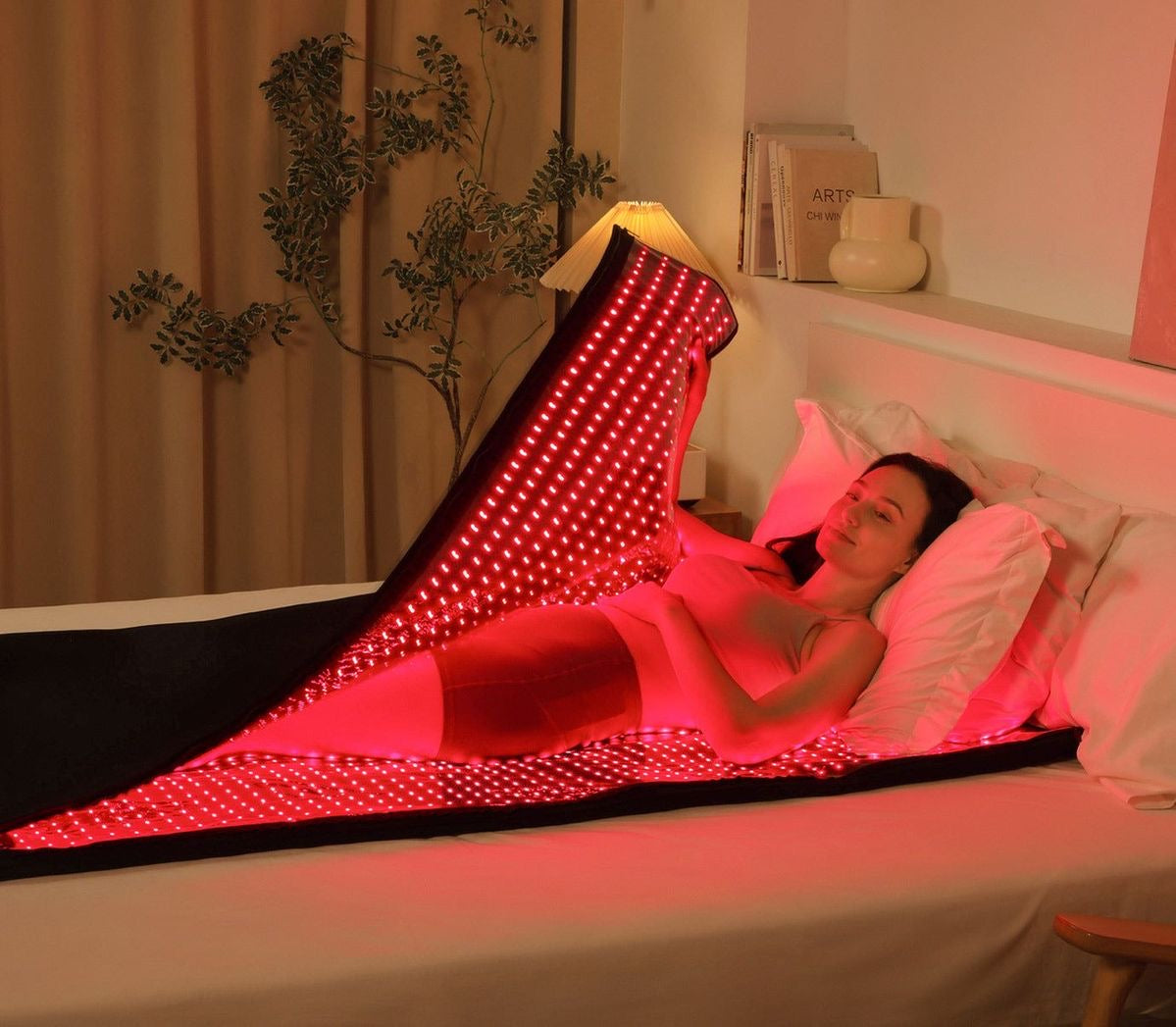Eczema got you scratching like a DJ? Short answer: yes, red light therapy can help calm itching, redness, and flare-ups. From Red Light Therapy at Home setups to Red Light Therapy Panels and even Red Light Therapy Beds, this glow-up might be your skin’s new best friend. Let’s explore how it works.

Understanding Eczema and the Need for New Solutions
Eczema, or atopic dermatitis, is more than just dry skin. It’s a recurring skin condition that causes intense itching, inflammation, and flare-ups.
Many traditional treatments only manage the symptoms short term, often leading to frustration. Steroid creams, for example, can thin the skin over time and aren’t ideal for daily use.
This is why more people are turning to natural remedies for eczema, including light therapy options like red light therapy.
How Red Light Therapy Works on Skin
Red light therapy uses specific wavelengths—typically between 630 and 850 nanometres—to penetrate the skin.
This light energy stimulates the cells to produce more ATP (energy), which helps the body repair itself faster. It also promotes collagen production and improves circulation.
For people with eczema, these effects can reduce inflammation and restore the skin’s natural barrier. It’s non-invasive and doesn’t cause skin damage.
Why Red Light Therapy May Help with Eczema
Calming Inflammation and Itch
Eczema is driven by inflammation. Red light has been shown to lower pro-inflammatory cytokines, which may help calm the skin and reduce itching.
Regular use can potentially lessen the severity and frequency of flare-ups.
Boosting Skin Repair and Strengthening Barrier
Healthy skin relies on a strong outer barrier. Red light therapy stimulates fibroblast cells to produce more collagen and elastin.
This supports healing and strengthens the skin’s ability to retain moisture and defend against irritants.
Improving Skin Hydration
Over time, improved skin cell function can lead to better water retention. This may reduce the dry, flaky texture that’s common with eczema-prone skin.
While not a moisturiser replacement, it supports skin health at a deeper level.
Comparing Red Light Therapy to Other Eczema Treatments
| Treatment Type | Effectiveness | Side Effects | Natural? |
|---|---|---|---|
| Corticosteroids | Short-term relief | Skin thinning, irritation | No |
| Antihistamines | May reduce itch | Drowsiness | No |
| Moisturisers | Essential, surface-level | Minimal | Yes |
| Red Light Therapy | Anti-inflammatory support | Few reported side effects | Yes |
Red light therapy offers a non-drug option that targets underlying inflammation, rather than masking symptoms.
It works best when combined with a solid skincare routine, including moisturising and avoiding common triggers.
Types of Red Light Therapy Setups

Red Light Therapy at Home
Home devices are a popular and accessible way to start red light therapy. These range from handheld gadgets to light panels that cover larger areas.
They’re easy to use, require minimal maintenance, and can be added to your daily routine in under 20 minutes.
Red Light Therapy Panels
These flat, rectangular devices emit high-powered red and near-infrared light. Panels are ideal for treating eczema on the arms, face, or back.
They offer more coverage than smaller tools and are often used five times a week for best results.
Red Light Therapy Beds
Found in some spas and wellness clinics, red light therapy beds offer full-body exposure. They’re the most powerful (and most expensive) option.
While not necessary for everyone, they’re useful for those with widespread skin issues or chronic inflammatory conditions.
How to Use Red Light Therapy for Eczema Safely
-
Start small: Begin with 5–10 minute sessions, 3–5 days per week.
-
Read instructions: Always follow the manufacturer’s safety guidelines.
-
Protect your eyes: Especially if using facial devices—wear protective goggles.
-
Stay consistent: It may take a few weeks to notice visible improvements.
Stick to the routine and monitor how your skin responds. If irritation occurs, take a break or consult a dermatologist.
Takeaways
-
Yes, red light therapy may reduce eczema symptoms like itchiness, redness, and dryness.
-
It works by reducing inflammation and helping your skin heal and retain moisture.
-
Red Light Therapy at Home is affordable and convenient, with options like panels or even full-body beds.
-
It won’t replace your skincare routine but can enhance it with regular use.
-
Safe, natural, and gentle—this may be the upgrade your skin has been waiting for.
Conclusion
If eczema has left you feeling irritated (literally and figuratively), red light therapy could be a skin-saving solution.
With minimal side effects, increasing popularity, and easy-to-use Red Light Therapy Panels and Beds, it’s never been simpler to try Red Light Therapy at Home.
Glowing, calmer skin? It might just be one session away.






